What is Diwali?
Diwali, or Deepavali, is by far the biggest and most important holiday in India. Deepa meaning lights, and avali meaning row in Sanskrit, Diwali is the Festival of Lights. Indians across the diaspora celebrate over the course of 5 days by lighting rows of diyas (clay lamps) and candles in every room of their house and outside of their house to invite light, prosperity, and happiness into their home. It also guards the family from evil and darkness.
In Hinduism, the day of Diwali marks the return of King Rama to Ayodhya, after he defeated the demon Ravana. The story changes a little region by region, but the point remains the same. It’s a celebration of the victory of light over darkness.
This festival isn’t just celebrated by Hindus in India, but by also by Jains, Buddhists, Sikhs, and Christians who culturally celebrate it as well. That’s why all people of the diaspora will invite their friends and extended family into their homes to celebrate in our customs and traditions over the course of five days.
How to Celebrate
You don’t have to be Hindu or part of the Indian diaspora to join in Diwali celebrations! The festival usually occurs sometime in late October to mid-November, depending on the lunar calendar.
Some traditions include:
- Cleaning your home from top to bottom, including polishing silver and gold. It’s also a good time to buy new gold to bring good fortune. This is known as the first day of Diwali, or Dhanteras.
- Decorate your home with diyas (clay lamps) and rangolis (colored sand artwork). Plain candles work, too! Lighting a diya invites the presence of Lakshmi, the goddess of wealth.
- Wear a new outfit to visit your friends and relatives to receive and give gifts and best wishes.
- Check out your local events going on for Diwali, perhaps there’s a fireworks display to enjoy!
- The last day, Bhai Dooj, celebrates the bond between brothers and sisters where they pray for each other’s well-being and success.
And my favorite - enjoy festival food, like gulab jamun, chaat, samosas, barfi, lassi, kachori, etc.
Medjool dates became extremely popular in India during the spread of Islam, since it was already popular in the Middle East. Now, dates make their way into Diwali festival food in chutneys and especially in desserts. They provide an alternative, heart-healthy and sugar-free option to desis looking to avoid the wild amounts of fried food and desserts everywhere.
Here are a few recipes you can enjoy!
Snacks and Appetizers
Popular snacks during Diwali are usually samosas, fried food, or namkeen (snacks). It’s pretty typical to have an assortment of chaat to serve while friends and family visit.
Samosa Chaat Dahi Vada Peanut Chaat
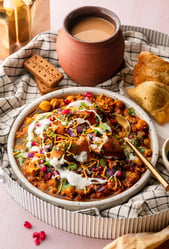
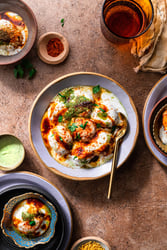
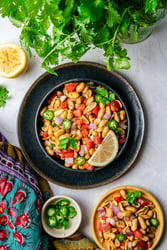
Paneer Aloo Samosas Cilantro-Mint Chutney
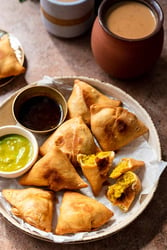
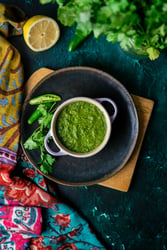
Desserts
Desserts are what’s most associated with a Diwali feast! Date Nut Ladoos and Stuffed Dates are a must for family members with dietary restrictions that are cutting back on sugar or want a heart-healthy option.
Malai Stuffed Dates Gulab Jamun Ras Malai Barfi
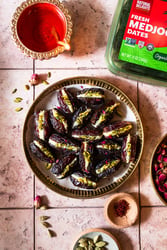
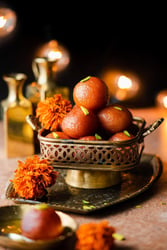
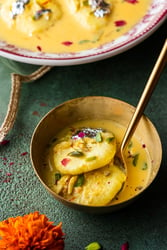
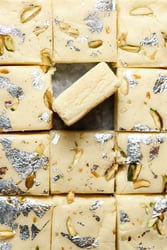
Date Nut Ladoos Suji ka Halwa Kheer
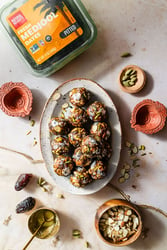
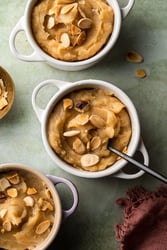
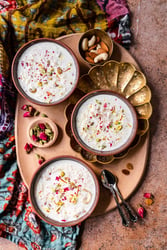
Drinks
Chai is a great way of welcoming guests and keeping their spirits up as they celebrate! Other popular drinks are lassis and milkshakes.
Rose Lassi Cardamon Date Shake Mango Mastani Masala Chai
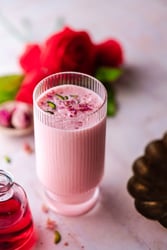
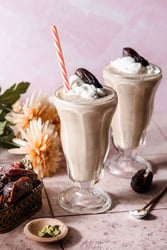
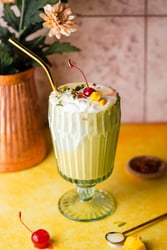
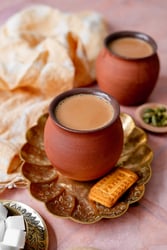
_____________________________________
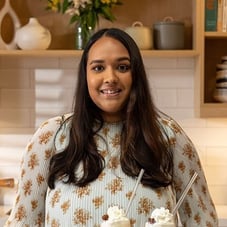
Shweta is the founder and creator behind all things Masala and Chai. Created in 2020, Masala and Chai showcases accessible and comprehensive Indian-inspired and authentic recipes, as well as resources to learn about the techniques, ingredients, and culture behind Indian food. Shweta currently resides in New York City where she works full time as a technology consultant.
